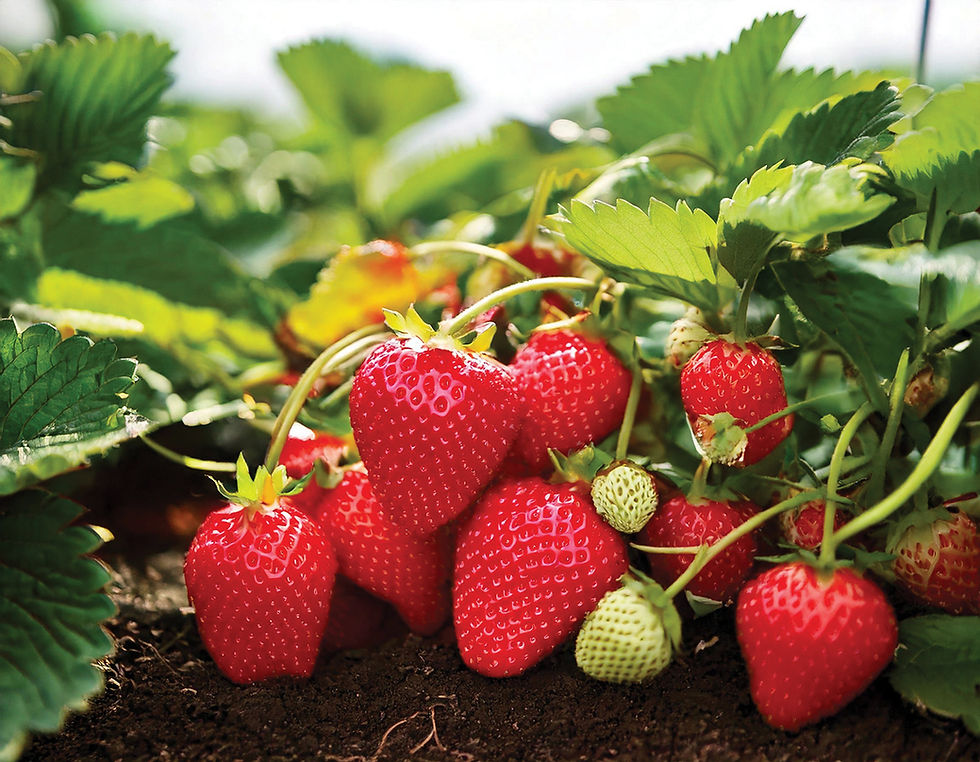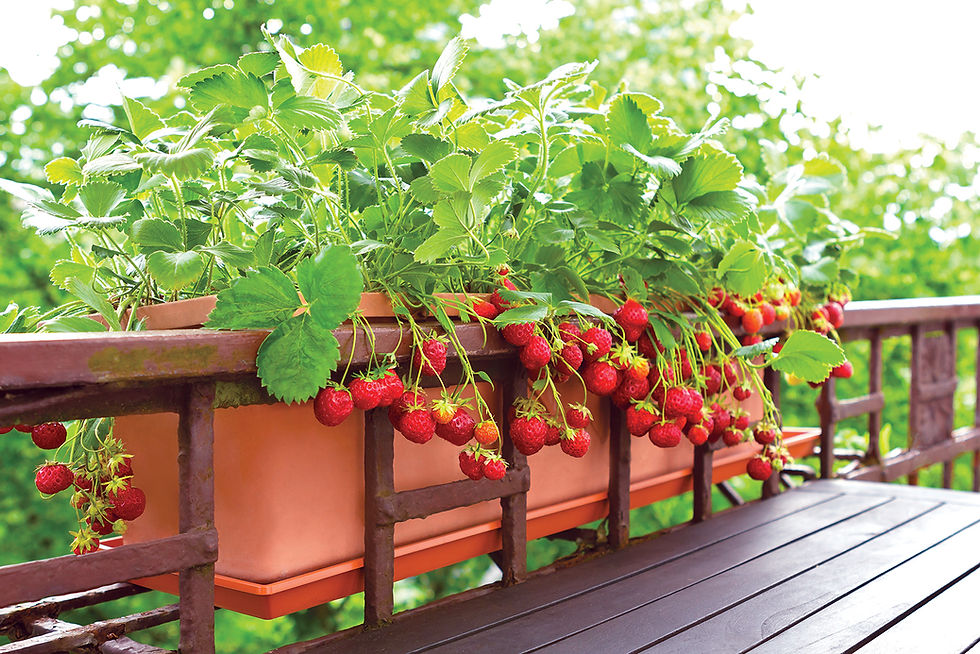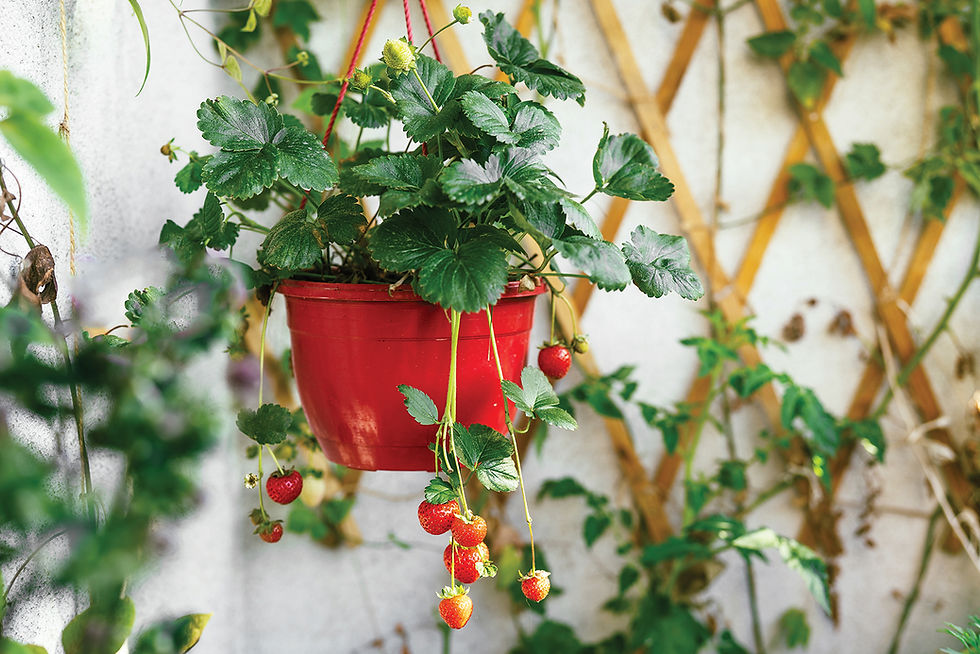Blooming Times: Strawberry Delight
- Flo Whitaker
- 7 days ago
- 2 min read

This month, Flo Whitaker focusses on that classic summer fruit - strawberries. Plant them now for a bumper crop next year!
Many plants are pretty but have no obvious practical use, while others are highly productive but are not noted for their looks. Strawberries, however, cover all bases. They’re the quintessential taste of summer and, even if their berries were inedible, would still make attractive border plants; with their daintily serrated leaves and charming flowers that pollinators adore.
Strawberries are traditionally grown in bespoke sites to promote maximum yield. Ideal conditions are a sunny, open position in humus-rich, well-drained soil. Spend time preparing the ground by rigorous weeding, incorporating well-rotted manure/ leaf mould and carefully levelling the plot. Set plants at 30cm intervals in rows that are preferably 60cm apart. Generous spacings gives easier access for weeding/harvesting and promotes good air flow – mould/mildew spores prefer damp, humid conditions.

A springtime feed of slow-release fertiliser will give plants an energy boost and a summer mulch of old compost or straw will lock in moisture and supress weeds. Many animals enjoy strawberries; birds, squirrels, rabbits, foxes, mice – the list is endless, so protective netting/ mesh is essential.
Ensure the covering is taut, to avoid animals becoming trapped. If you’re planning to grow a variety of soft fruits, have sufficient space and modest DIY skills, a walk- in, wire mesh fruit cage can be easily constructed in a weekend – just be prepared for reproachful looks from furious blackbirds.
Strawberry plants can be container-grown in large patio pots or troughs. They may also be crammed into hanging baskets, so long as you quickly address any mildew issues, apply a weekly liquid feed and are prepared to water daily in hot weather.

Children are often fascinated by the concept of hanging baskets – an ideal opportunity to get them gardening, perhaps? Some folk grow strawberries in multi-tiered pots, but I’ve never had much success with these; finding the top tier prone to drying out, while the bottom layer remains resolutely soggy.
From mid-summer, long shoots known as ‘runners’ appear on mature plants. They’ll take root wherever they touch the ground. You can encourage this by securing runners to the soil surface – either by holding them down with stones or fastening them into position with u-shaped wire hairpins.

Strawberry plants lose their vigour after several years, so take the opportunity to propagate new plantlets to replace old stock, but always remove unwanted runners to preserve the strength of parent plants.
There are so many strawberry varieties, all with different cropping times – read the labels before you buy! ‘Earlies’ are usually fruiting by end May/early June. Follow on with ‘mid-season’ and ‘late’ types for a succession of crops. If you prefer modest quantities, select ‘perpetual’ or ‘ever-bear’ varieties. They produce small, intermittent crops throughout summer; so there’s usually a couple of berries to decorate a scrummy dessert.








Σχόλια